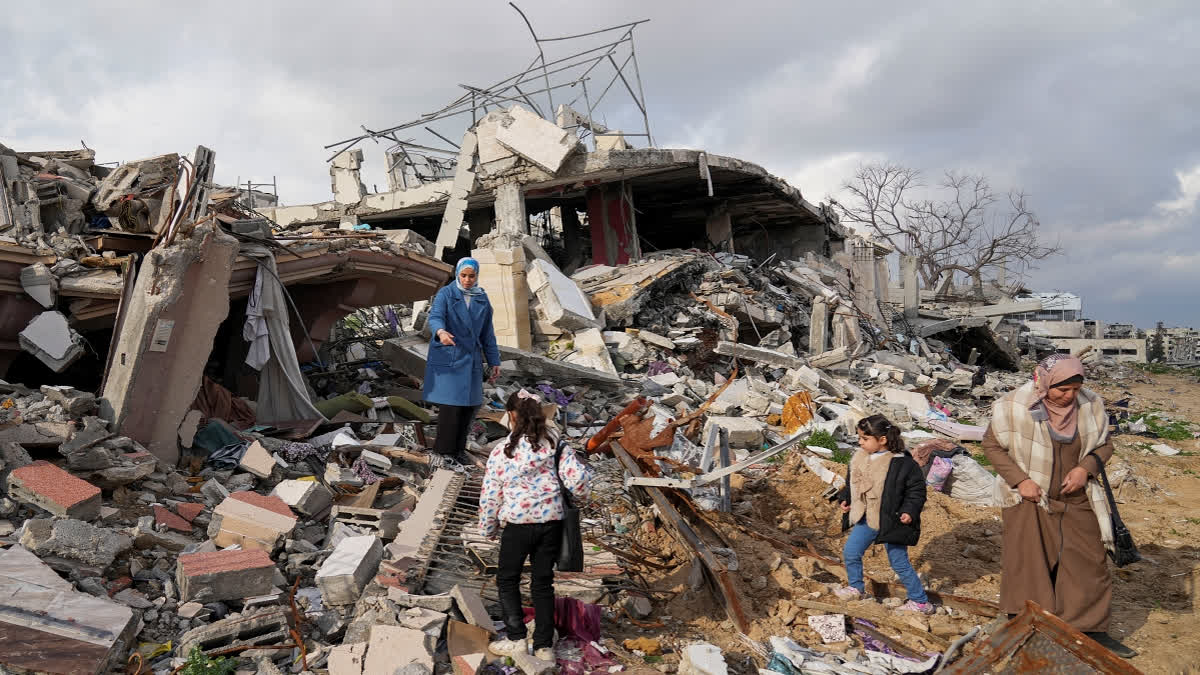Beit Lahiya:When night falls over northern Gaza, much of the cityscape of collapsed buildings and piled wreckage turns pitch black. Living inside the ruins of their home, Rawia Tambora's young sons get afraid of the dark, so she turns on a flashlight and her phone's light to comfort them, for as long as the batteries last.
Displaced for most of the 16-month-long war, Tambora is back in her house. But it is still a frustrating shell of a life, she says: There is no running water, electricity, heat or services, and no tools to clear the rubble around them.
Nearly 600,000 Palestinians flooded back into northern Gaza under the now month-old ceasefire in Gaza, according to the United Nations. After initial relief and joy at being back at their homes — even if damaged or destroyed — they now face the reality of living in the wreckage for the foreseeable future.
"Some people wish the war had never ended, feeling it would have been better to be killed," Tambora said. "I don't know what we'll do long-term. My brain stopped planning for the future." The six-week ceasefire is due to end Saturday, and it's uncertain what will happen next. There are efforts to extend the calm as the next phase is negotiated. If fighting erupts again, those who returned to the north could find themselves once again in the middle of it.
A massive rebuilding job has no way to start
A report last week by the World Bank, U.N. and European Union estimated it will cost some $53 billion to rebuild Gaza after entire neighborhoods were decimated by Israel's bombardment and offensives against Hamas militants. At the moment, there is almost no capacity or funding to start significant rebuilding.
A priority is making Gaza immediately livable. Earlier in February, Hamas threatened to hold up hostage releases unless more tents and temporary shelters were allowed into Gaza. It then reversed and accelerated hostage releases after Israel agreed to let in mobile homes and construction equipment.
Humanitarian agencies have stepped up services, setting up free kitchens and water delivery stations, and distributing tents and tarps to hundreds of thousands across Gaza, according to the U.N. President Donald Trump turned up the pressure by calling for the entire population of Gaza to be removed permanently so the U.S. can take over the territory and redevelop it for others. Rejecting the proposal, Palestinians say they want help to rebuild for themselves.
Gaza City's municipality started fixing some water lines and clearing rubble from streets, said a spokesperson, Asem Alnabih. But it lacks heavy equipment. Only a few of its 40 bulldozers and five dump trucks still work, he said. Gaza is filled with over 50 million tons of rubble that would take 100 trucks working at full capacity over 15 years to clear away, the U.N. estimates.
Families try to get by day by day
Tambora's house in the northern town of Beit Lahiya was destroyed by an airstrike early in the war, so she and her family lived in the nearby Indonesian Hospital, where she worked as a nurse. After the ceasefire, they moved back into the only room in her house that was semi-intact. The ceiling is partially collapsed, the walls are cracked; the surviving fridge and sink are useless with no water or electricity. They stack their sheets and blankets in a corner.
